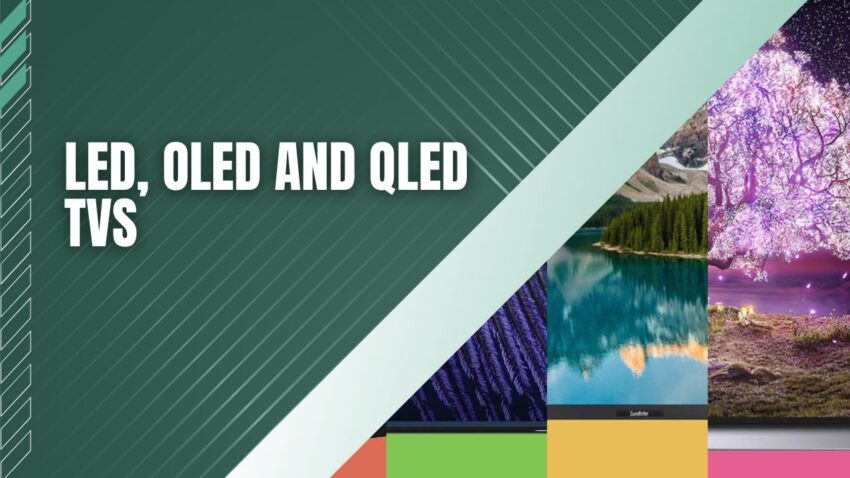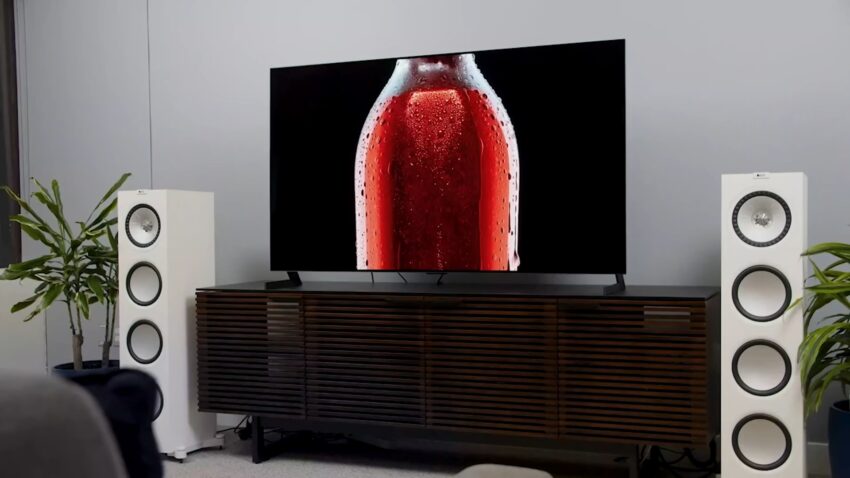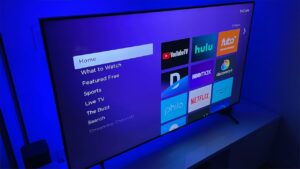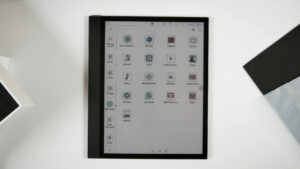The biggest factor when finding the best product for you is understanding the different techniques that each TV has. In this case, it is LED, OLED and QLED TVs.
Below I will go over the basics of each different type and share with you their weaknesses side by side with their strengths. I’m also aiming to keep brief as if you are more interested in the actual working behind the scenes I’ve done an article on just that which you can find here.
What is a LED TV?
A very simple answer to what is a LED TV is that it is a ‘light-emitting diode’. These types of TVs use standard LCD panels while LED lights are used as the backlight to help produce a more appealing picture. They are also more affordable and more widely available. this is because they are easy and cheaper to manufacture than its competition.
For this reason, if you find yourself needing to save some money when buying a TV, an LED TV will be your best choice. They offer the most advantages for the cost and simply are just downright reliable.
What is QLED TV?
I’m my honest opinion, the answer to what is a QLED TV is that it is just a marketing stunt by Samsung to attract potential buyers. They use the same technology as LED TVs, with subtle software enhancements that are often not worth the price they charge.
On the other hand, they do offer the best range of colors available by a small margin. Though the margin is small, it is a lead nonetheless. So if you find yourself wanting the best colors, and are okay with the cost, then QLED TVs are for you.
What is OLED TV?
The best all-around TV that money can buy. That is the answer to what is an OLED TV. They offer the most high-end result while maintaining a relative cost to their performance, unlike QLED TV.
In this case then, if you find yourself with a large budget and want a TV that will outperform all other TVs, then an OLED TV will be the best for you.
Contrast Ratios
LED TV contrast ratio: ~6000-7000:1
QLED TV contrast ratio: ~4500-5500:1
OLED TV contrast ratio: Infinite:1 (∞)
In recent years even the most powerful and more complex local dimming options have not begun to bridge the gap that has been created by OLED TVs. Overwhelmingly OLED TV has a much better contrast ratio, but LED TVs still beat out QLED in this category. Blacks will look good here, but in a brighter room, the differences will be noticeable.
Viewing Angles
LED TV viewing angle: ~40°
QLED TV viewing angle:
OLED Tv viewing angle:
This is also another huge difference that OLED TVs tend to overwhelm their competition. Granted LED TVs do have an average viewing angle and perform well with IPS panels, they simply do not compare. The same can be said for the QLED TVs that followed in recent years. They are said to be an improvement but are just not an improvement at all.
Color Gamuts
LED TV DCI Coverage: ~80%
QLED TV DCI Coverage: ~86%
OLED TV DCI Coverage: ~84%
Most notably the Samsung QF7 makes this difference known as it leads the pack in color gamuts. LED TVs to get close, but not nearly as close as OLED TVs. This is very good for HDR and UHD content when watching Blu-ray movies or streaming high-demanding 4K content. The only real difference that isn’t shown here, is the cost of each. LED TVs are dramatically cheaper.
Motion Blurs
LED TV motion blur: ~20 ms
QLED TV motion blur: ~10 ms
OLED TV motion blur: <0.02 ms
The LED TVs are comparable to the QLED TVs under this metric, but neither compares to the response time for the OLED TVs. This is because of the natural way that OLED TVs produce their picture. With each LED being individual from the next it makes for a lightning-fast response time that the other two cannot even begin to handle. OLED TVs are a clear winner here.
TV Brightness
LED TV brightness: ~500 cd/m2
QLED TV brightness: ~400 cd/m2
OLED TV brightness: ~300 cd/m2
Though surprising to some, the LED TVs beat out QLED and OLED TVs in sheer brightness of the display. This comes down to two things, sheer power is given to the display and the technology that limits the display. Often times the OLED TVs will dim their brightness when the picture is not all that bright or when it is not needed. This prevents the display from becoming too bright but also limits the true power of its HDR content. In the case of LED TVs, they simply tend to keep bright all throughout leading to a higher level of brightness.
FAQ
Can LED TVs display true blacks like OLED TVs?
LED TVs cannot achieve the same level of true blacks as OLED TVs. While they can produce good blacks, OLED TVs have individual pixels that can turn off completely, resulting in infinite contrast ratios and deeper blacks.
Do QLED TVs suffer from burn-in like OLED TVs?
QLED TVs do not suffer from burn-in issues like OLED TVs. Burn-in is a phenomenon where static images can leave a lasting imprint on the screen. OLED TVs are more susceptible to burn-in, although modern OLED technology has improved significantly to mitigate this issue.
Can QLED TVs match the color accuracy of OLED TVs?
QLED TVs can achieve excellent color accuracy, and some models offer a wide color gamut. However, OLED TVs still have a slight edge in color reproduction, delivering more vibrant and saturated colors.
Are LED, QLED, and OLED TVs suitable for gaming?
LED, QLED, and OLED TVs can all be suitable for gaming, depending on your specific requirements. LED and QLED TVs often offer features like low input lag and gaming modes, while OLED TVs provide exceptional motion handling and fast response times. However, it’s important to consider factors such as gaming features, screen size, and budget when choosing a TV for gaming.
Can LED, QLED, and OLED TVs be wall-mounted?
Yes, all three types of TVs can be wall-mounted. Most TVs come with standard VESA mount compatibility, allowing for easy installation on a wall. It’s recommended to check the TV’s specifications and purchase a compatible wall mount for secure and proper installation.
Final Words
If you find yourself interested in a TV I recommend two things. If you are interested in saving money to get an LED TV. There are tons of great options available out there. Secondly, if you are interested in the best performance on the market to get an OLED TV. They often more affordable than QLED TVs and simply just perform better overall.
I hope this works out the kinks with LED, QLED and OLED TV.










